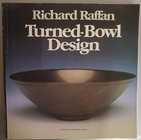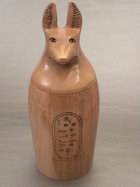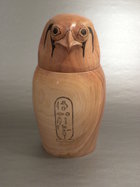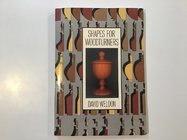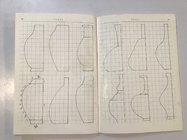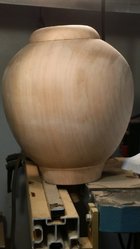Based on the recommendations above, I tracked down and purchased "Woodturning--a source book of shapes" by John Hunnex and "Shapes for Woodturners" by David Weldon. I already own Richard Raffan's "Turned Bowl Design" and "Woodturning Projects: a workshop guide to shapes" by Mark Baker. Here's my comparative book report. (for you Bottom Liners in a hurry, scroll to the last paragraph)
The Hunnex book is actually a photographic journey through the author's gallery of work. There are nice pictures and generally a variety of styles. There is no explanation of why the shape works or is desirable, and no silhouette or diagram of the shape. As a result, the shapes have to speak for themselves, and other decorative aspects of the pieces can interfere with the reader's ability to grasp the point. Also, the angle at which the photos are taken does not really maximize the appreciation of shape. Frankly, I found some of the shapes unappealing, but I'm no art critique either.
The Weldon book is at the opposite end of the spectrum, in many respects. Instead of pretty pictures, it has innumerable line drawings of shapes that the reader might try, displayed on a grid so copying should be easy. There are also instructions for altering the proportions of the drawings. It's unclear where the drawings came from, why they were selected, and which might be more aesthetically pleasing than any other. Basically, it's a very large volume of raw material, with the reader having both the freedom and the responsibility to choose which to use. Weldon includes shapes for turned objects other than bowls, as well.
Richard Raffan's book is much more instructional than the two above. It includes numerous black and white photos that illustrate what Raffan considers good, pleasing design and also what produces an unappealing appearance. There are a good number of line drawings, similar to Weldon's book, which are both intended to illustrate points he's making and also to provide a very simple template.
Mark Baker's book is also an instructional one, with more of a 'how to' emphasis on making compared to Raffan's emphasis on design. The book begins with information on safety, materials and tools. Then there are sections for boxes, bowls, platters, hollow forms and natural edge work. Each section starts with a series of step-by-step pictures on how to make a representative piece, and then follows with a dozen or so other pieces with photo and detailed diagram on the cross section, and a couple of alterations or alternate options that might be made.
After going through all 4 of these, my opinion is that the Hunnex book is the least helpful to me. It's a bunch of examples of the work of one person, without a guiding hand to help me understand shapes. I have seen several books that contain the work of a half dozen people, like "500 bowls" or whatever it's called, that would be better, simply because the pieces in the other books were objectively juried as desirable work. The other 3 books reviewed here all have their place for those of us learning to make appealing shapes, with slightly different emphasis and expressions. Baker's takes the reader through the process of making, Raffan shares his personal (and expert) opinions on what makes a well shaped bowl with examples, and Weldon provides a bazillion examples and leaves you to choose what you like. As with all things in turning, each of us will have our own preferences.


